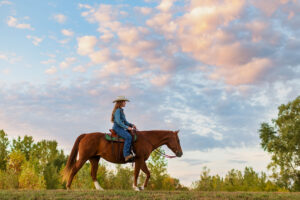Examining Horse Deaths Related to Endurance Rides
“Endurance” is an aptly named riding discipline. The sport requires horse and rider to complete more than 50 to 100 miles of trail in a single day. Depending on the competition type, terrain, and climatic conditions, horses might be actively working anywhere from six to 24 hours. Because of the nature of the sport, dehydration, electrolyte imbalances, and heat stress can arise, sometimes leading to fatalities.
To investigate causes of fatality in endurance horses, Olin Balch, DVM, MS, PhD, of North Fork Veterinary Service, in Cascade, Idaho, and Hal Schott II, DVM, PhD, Dipl. ACVIM, professor of large animal medicine at Michigan State University, reviewed 13 years of endurance ride veterinary reports. Schott presented their findings at the 2015 American Association of Equine Practitioners Convention, held Dec. 5-9 in Las Vegas.
For their study, Balch and Schott compiled results from American Endurance Ride Conference post-ride surveys and veterinary reports from 2002-2014. During this time there were 96 fatalities out of 270,070 horses entered in endurance competitions—that’s 0.32 fatalities per 1,000 starts. Of the fatalities, 69 were euthanized and 27 died. Eighty-seven had participated in the ride, while nine others died or were euthanized due to injuries sustained by escape from an enclosure, kick injury, or colic unassociated with the demands of endurance exercise. There were no differences among sex or age and the number of fatalities did not differ over the years studied. Although there were no statistically significant regional differences, the Southwest had more fatalities than the West, which had more than the Mountain region, which had more than the Northeast.
“Despite veterinary oversight, which is arguably the highest of any equestrian sport during competition, fatalities do occur,” remarked Schott, who presented their findings. During endurance rides, horses must stop at mandatory rest points for examination by a ride veterinarian to determine that they are “fit to continue.” At the finish line exam, horses must again be examined and deemed fit to continue in order to receive a completion and placing
Create a free account with TheHorse.com to view this content.
TheHorse.com is home to thousands of free articles about horse health care. In order to access some of our exclusive free content, you must be signed into TheHorse.com.
Start your free account today!
Already have an account?
and continue reading.

Related Articles
Stay on top of the most recent Horse Health news with


















